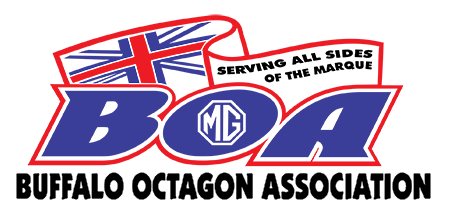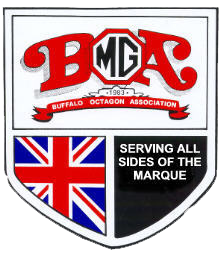Bury Me in An Old MOWOG Parts Box - Miller, Offenhauser, and Meyer-Drake
By Jay Lockrow
Miller – Offenhauser – Meyer-Drake
A few weeks ago at our weekly breakfast meeting the usual range of topics were discussed such ascaplock and flintlock, muzzle loading rifles, shortwave radios, airplanes, automobiles, boats, carrousel horsesand occasionally people. You know, a normal morning with a group of motor heads. We have a few rules, no politics and no religion but we also never talk sports. Seems no one has an interest in who won yesterday football game or athletics in general, listening to these types is like listening to a foreign language.
Anyway, somehow we started discussing Offenhauser racing engines and I chimed in and noted that all Offenhausers are really Millers for the simple reason Fred Offenhauser bought out Harry Miller and continued to manufacture the engines under his own name. I also interjected that Millers and/or Offenhausrs were headless engines and therefor could not possibly blow a head gasket. This kept the discussion going and I had to explain for them how the engine was designed and built without a cylinder head. This means that the block and head were one integral unit and, for example, to do valve work one must disassemble the block from the base, remove the connecting rod and piston before you can get to the intake or exhaust valve. This is a tedious process but it does have its advantages along with the obvious disadvantages. This seemed to faze a few of them so I suggested they acquire a copy of the book “The Miller Dynasty” by Mark Dees. I told them it would probably cost them about $250 but it is a magnificent piece research and from reading it,the author mentions it took him several years to research and then write and publish the book. From his own accounts he spent years interviewing many of the early racing drivers, boat racers and aviation people for the book. The author unfortunately is now deceased (automobile accident) and the price I quoted them is nowhere what they are asking. The book is now out of print but used copies bring $250and new ones, if available, I have seen around $1200.
Harry Miller was a genius when it came to building racing engines and he built a lot of them. If you needed something special he could and most likely would build it for you. He built engines for aircraft, racing boats and racing cars. He built V eights, flat opposed eights, V twelves and even a V sixteen double overhead camshaft engine. By the 1920s Miller engines virtually dominated oval track racing beating Duesenberg and all others. I don’t claim to be any expert on Miller but the fact that he was able to produce such engines before WWII is amazing. Where many of these engines are today I have no idea. The book claims some of the marine engines are on the bottom of any particular body of water but if you really want to see some there are several in the Indianapolis Speedway Motor Museum. If you ever get a chance to view a Miller or Offenhauser apart be sure to take the opportunity. You will see jewel like precision that looks like an overgrown swiss watch. Miller was a lot like Ettore Bugatti, who stole a good number of Millers ideas, one of type of people whos final product had to “look right”. For example a certain cover might nor really have to be machine turned or plated but to “look right” Miller and Bugatti did this sort of thing.
Miller with his success also had flights of fancy. As I said he built many engines and many of them were not profitable as well as a few other unprofitable directions, consequently by 1933, Miller, not a good businessman, was bankrupt.
This was the point when Fred Offenhauser took over. He along with the very talented LeoGoosen took the most profitable 96 cubic inch “Offy” and began perfecting it. This is the engine that became a true legend. It was the engine that dominated the oval track through the 1950s and right up to the mid 1960s. It really did not stop there it was stillo out winning races through the mid 1980s where it was eventually outclassed by the Ford and Chevy V8s and a victim of rulebook changes than a engineering fault. At the end the “Offy” four cylinder was a total of 270 cubic inches of punch. Leo Goosen was the man that dreamed and drew the engine.
The final days of the engine were under the ownership of Lou Meyer and Dale Drake. The Meyer&Drake name never really took off like “Offy”
The book “Offenhauser by Gordon Eliot White is another magnificent piece of research. I have also read this and found it fascinating. However of all the photos in both books my favorite is in the book Offenhauser by White. On page 115 the beginning of chapter eight is a picture of aOffenhauser midget engine affixed to a MG TC transmission with the “Offy” running twin SU carburetors. Just makes my heart sing!

